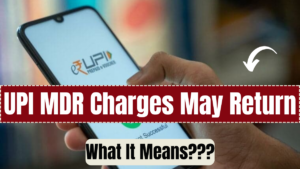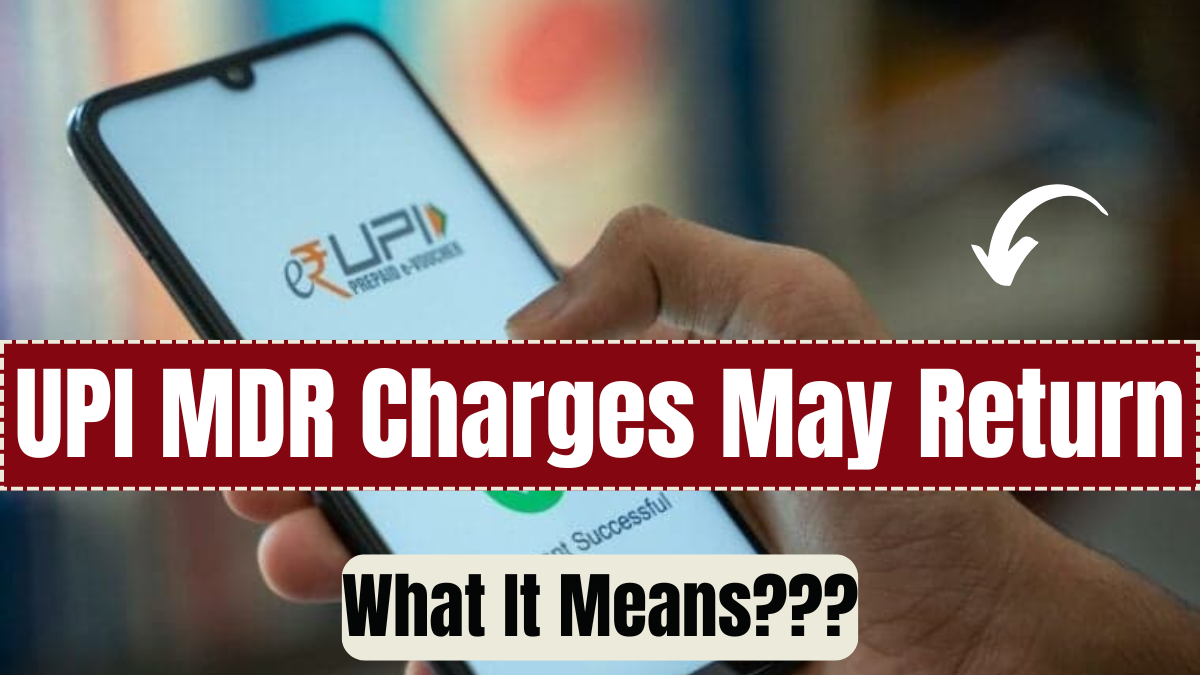Unified Payments Interface (UPI) has become a cornerstone of India’s digital economy, enabling fast and convenient money transfers without any user fees. However, April 2025 might mark a shift in this system as the Payments Council of India (PCI) has proposed reintroducing Merchant Discount Rate (MDR) charges on UPI and RuPay debit card payments. This development could significantly reshape how merchants, consumers, and service providers engage with digital transactions.
With government subsidies declining, the demand for a sustainable revenue model for digital payments is gaining traction. Let’s explore the full implications of this proposal and what it means for India’s rapidly evolving payment ecosystem.

What is UPI and Why Is It Important?
Unified Payments Interface (UPI), developed by the National Payments Corporation of India (NPCI), allows real-time, interbank money transfers through a unified platform. It eliminates the need for separate banking apps and supports transactions via platforms like Google Pay, PhonePe, Paytm, and bank-specific apps.
Notable Features of UPI
-
Instant money transfers with real-time confirmation
-
Currently zero transaction fees for both users and merchants
-
High-end security using two-factor authentication
-
Compatibility with multiple payment apps and platforms
In February 2025 alone, UPI recorded over 16 billion transactions worth nearly ₹22 lakh crore, reinforcing its dominant role in India’s digital payment sector.
Were UPI Transactions Always Free?
No, free UPI transactions are a relatively recent phenomenon. Prior to January 2020, merchants paid an MDR fee (usually less than 1%) on UPI and RuPay transactions, shared among banks and payment providers.
How UPI Became Zero-MDR
In December 2019, India’s Finance Minister announced the removal of MDR charges for UPI and RuPay transactions, effective January 2020. This decision was supported by government incentives, where subsidies compensated financial institutions for processing fees.
However, in the financial year 2025, these subsidies have seen a sharp reduction, raising concerns over the long-term financial viability of free UPI services. Many fintech and banking industry leaders now advocate for reinstating nominal MDR charges.
Understanding MDR and Its Historical Rates
The Merchant Discount Rate (MDR) is a transaction fee charged to merchants for processing digital payments.
| Payment Type | MDR Before Jan 2020 | Current MDR Rate |
|---|---|---|
| Credit Cards | 1% – 3% | 1% – 3% |
| Debit Cards | 0.5% – 1% | 0.5% – 1% |
| UPI Transactions | <1% | 0% |
| RuPay Debit Cards | <1% | 0% |
For instance, if a merchant receives ₹5,000 via credit card with a 2% MDR, ₹100 would be deducted as processing fees. Currently, UPI transactions do not involve such deductions, making them highly popular among merchants and small businesses.
Why Is There Pressure to Reinstate MDR Fees?
The digital payments industry cites several reasons to justify the return of MDR charges:
Declining Government Subsidies
-
FY24: ₹3,500 crore allocated for MDR compensation
-
FY25: Only ₹1,500 crore allocated — less than 15% of the estimated ₹10,000 crore required to maintain UPI infrastructure
Sustaining the Ecosystem
Processing billions of transactions monthly demands constant investment in cybersecurity, compliance, fraud prevention, and merchant services. Without revenue from MDR, sustaining innovation and service quality becomes difficult.
Creating Fair Competition
Unlike credit and debit cards that still generate income for payment service providers, UPI and RuPay do not. Introducing a small MDR fee (such as 0.3%) could help level the playing field and make the business more viable for all stakeholders.
What Could Happen If MDR Is Reintroduced?
The reintroduction of MDR fees could lead to several key changes in India’s digital payment landscape:
Impact on Merchants
-
Increased operational costs due to transaction fees
-
Potential price hikes or added charges for digital payments
-
Possible return to cash payments to avoid MDR charges
Impact on Consumers
-
Higher prices as merchants may pass on the MDR burden
-
Fewer stores accepting UPI if profitability is affected
Impact on Payment Providers
-
A consistent revenue stream can help fintechs and banks improve infrastructure, expand services, and strengthen customer support.
FAQs
What is the current status of MDR fees on UPI transactions?
As of April 2025, UPI and RuPay transactions remain zero-MDR, but the Payments Council of India is lobbying for a return of these fees.
Why were MDR fees removed in the first place?
They were eliminated in January 2020 to promote digital payments, with the government offering subsidies to cover the processing costs.
Will consumers have to pay extra if MDR is reintroduced?
Indirectly, yes. Merchants may increase product prices or charge additional fees to cover MDR costs.
Who will benefit if MDR fees return?
Banks, fintech companies, and payment gateways will benefit by generating steady revenue for maintaining and upgrading digital infrastructure.
What is the proposed MDR rate for UPI?
Industry experts suggest a nominal MDR rate around 0.3%, but the final figure would depend on regulatory approval.
Click here to know more.
